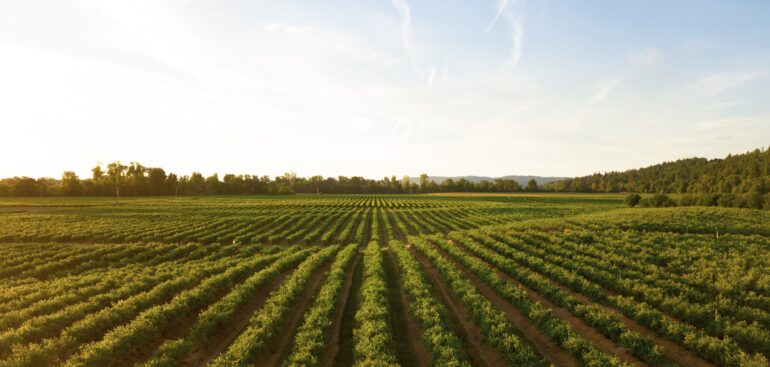Latest
Farmer/Rancher Checklist for Comparing Carbon Programs
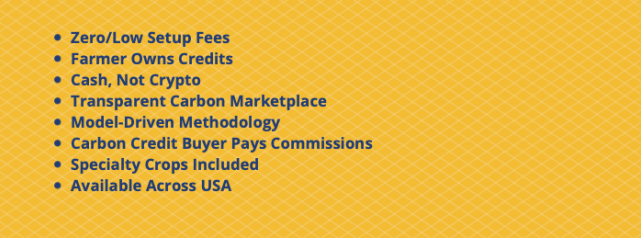
The voluntary carbon market for nature-based projects is a crucial element in mitigating climate change. It also has the potential to be a very lucrative supply chain, from carbon project development to the trading of carbon offset credits. Many programs, however, seem to put the farmer last, not first, in the process. This article will break down and compare the different features – and drawbacks – of the most popular carbon programs, and provide guidelines to picking the program that works best.
This article compares policies and incentives offered by some of the largest and well-known agricultural carbon programs. All information here was accurate at the time of publication. Policies are subject to change as firms rapidly change to address an evolving industry. PanXchange is not responsible for errors, omissions, or updates.
The Carbon Market Today
The demand for carbon credits has exploded, with fortune-500s including Meta, Shopify, Microsoft, American Express and Ford Motors intensely ramping up their carbon credit purchases to achieve net zero emissions. But even though farmers have more autonomy and choice than ever before about with whom they earn and sell their carbon credits, most carbon programs operate under a patchwork of different rules, incentives and penalties. The voluntary carbon credit industry (now more than 20 years old) operates in a mostly opaque realm of undisclosed fees, payments, commissions, in addition to high per-acre verification costs.
Small farms still make up the majority of US farming operations, making their inclusion into carbon programs essential if we want to make a substantial climate impact. However, most carbon programs are cost, time, and logistically prohibitive for average farms, especially the programs that only offer direct payments or profit sharing. This is a massive opportunity cost to the climate, to the farmer and the consumers seeking to offset their carbon footprints.

The voluntary carbon credit
industry (now more than 20
years old) operates in a
mostly opaque realm of
undisclosed fees, payments,
commissions, in addition to
high per-acre verification
costs.
In recent years, nature-based carbon credits have increased in value from an average of $10/ton of CO2 to $40-$45/ton, and some are predicting a rise to over $100/ton, but the farmer is not maximizing profits.
Many carbon credit programs either pay farmers a set fee-per-practice for regenerative farming (sometimes as low as $3-$6 per acre depending on the practice) or enroll farmers in opaque broker arrangements where fees are skimmed from a farmer’s payments (up to $20 per ton). Others transact in cryptocurrency, limiting available buyer pools and potentially reducing the sale price, since most established carbon registries prohibit crypto transactions.
In this demand-driven market, farmers should seek a partnership that gives them control of their own credits to sell on the open market for maximum price. Buyers, not sellers, should pay commissions, maximizing the profit to the parties who take the risk and make the efforts.
The optimal partnership offers the independent farmer several best-choice options: Low or no-cost set up fees; credit ownership to the farmers; payment in cash, not crypto; trading on a transparent platform; tech-enabled monitoring; commission paid by buyers; and the widest selection of eligible crops and locations.
In this demand-driven
market, farmers
should seek a
partnership that
gives them control
of their own credits
to sell on the open
market for maximum
price.
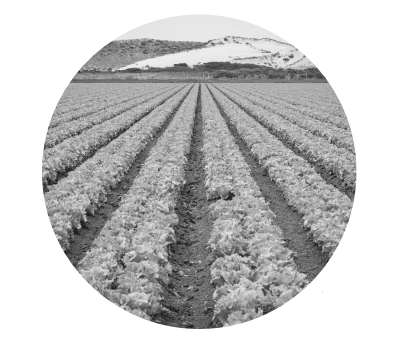
It’s important to get a carbon credit partnership right, since it’s a one-time arrangement that sets a farmer up in a program for up to 10 years.
Voluntary carbon credits are now tradable instruments, which – if done right – will subsidize climate-smart farming practices and reward farmers for implementing them.

Zero/Low Setup Fees for Farmers
Over and above the cost of soil sampling and carbon quantification tools, auditing fees for project validation and verification run well into the hundreds of thousands of dollars, making carbon projects cost-prohibitive for the average American farmer. Third-party verification for soil organic carbon projects is quoted on a per-project basis, and this means higher costs-per-acre for smaller, independent farms.
Carbon programs make these programs accessible by paying most setup costs. It’s important to understand how these programs recoup their costs when comparing carbon programs.
The pay-for-practice business model pays farmers the least amount of money, but is also the least risky. Carbon program providers such as Bayer and Land O’ Lakes (Truterra) charge zero fees to farmers or pass-through the fees to their auditor(s).
While these programs do have a minimum payout guarantee, they cover their own fees and verification costs from the sale of carbon credits that the farmer never owns. For example, in 2021* Bayer paid $3 per acre/year for farmers to no-till and strip tilling and $6 per acre/year for planting cover crops ($9 per acre per year for both). Truterra (Land O’ Lakes) paid $2 per acre/year for eligible practice changes in 2021.* Truterra now enrolls some farmers in the carbon program paying $20/ton of new sequestered carbon. Overall, major agribusinesses are using this as another grain origination tool rather than an incentive structure to encourage regenerative practices.
PanXchange also covers most startup costs for farmers participating in the program. But because we derive revenue from buyer commissions and sell anonymized, aggregated market data, PanXchange provides farmers a pathway to receive the highest carbon credit price.

It’s important to
understand how
these programs
recoup their costs
when comparing
carbon programs.
* “Details from How to Grow and Sell Carbon Credits in US Agriculture” November, 2021 by Iowa State University Extension.
Farmers Own the Credits
A second business model is the credit-rewarding option, where farmers receive the carbon credits as they participate. Ideally, farmers should retain the full market value of their credit at the time of sale and have autonomy of when to sell and to whom. Providers such as PanXchange and Nori take this approach. Farmers adopt regenerative agronomic practices and are subject to an audit by an accredited third party. However, once practices are confirmed by an audit, the farmer receives carbon offset credits over the course of the five-year program.
While some firms, such as Indigo and Corteva (in conjunction with Indigo) say that their clients earn carbon offset credits, the rights to those credits are taken from the farmers by contractual agreement, and are sold to a limited buyer pool outside of the farmer’s control. To counteract these limitations, Indigo offers clients a minimum price guarantee of $20 per carbon credit starting with the 2021 crop, although prices for credits elsewhere have risen to more than $40. This price guarantee is only good for the first year of a five-year contract, according to Indigo’s contract language.
In these programs, the farmer does not have agency to sell to the buyer of choice. Indigo’s carbon programs pay farmers for carbon credits that Indigo sells to its own buyer pool. Upon sale, revenues above price guarantees pay expenses and passthroughs to brokers and third-party auditors. While distinct from the pay-for-practice model, neither gives full agency, or the full potential financial reward to the farmer.
PanXchange’s program is built around farmers owning the carbon credits from their climate-smart practices, and having the autonomy to sell them on a transparent market to the buyer of their choosing for maximum profits. We developed our business model after noting the missing gap for programs where farmers own their carbon credits but can’t pursue their full sale value because of structured buyback agreements.
Ideally, farmers should retain the full market
value of their credit at the time of sale, and have
autonomy of when to sell and to whom.
Cash, Not Crypto
Some carbon credit programs offer to sell crypto tokens that represent farmers’ carbon removals to buyers, building their carbon credit program around a virtual asset that can be traded for value now or in the future.
Notable adopters of crypto in carbon markets include Nori, as well as emerging players such as Toucan, FlowCarbon and KlimaDAO. For example, Nori pays farmers carbon credits in crypto tokens called NORI, representing one metric ton of carbon. The company says when a token is purchased, the carbon credits permanently retired from the ledger, preventing “double counting.”
Nori uses the analogy that the NORI token holds value like a “gift card” and farmers can choose to cash in their token, depending on its dollar value. But gift cards shouldn’t lose their value, and older vintage carbon credits can shed value over time – up to 24%, one 2020 study showed. Furthermore, it’s harder to value a carbon credit that’s been retired than one that is new.
Some buyers and sellers are excited by the meshing of crypto and carbon credits – two relatively novel money concepts. But the established carbon credit infrastructure has rejected crypto as a valid transactional method for carbon credit markets for the time being. The world’s largest carbon credit registries, including nonprofits Verra, and Gold Standard Registry have prohibited or cautioned against the use of registered carbon credits to be backed by cryptocurrency, saying customers participating in the crypto market for carbon credits operate at “their own risk.” Verra is now seeking public comment on its proposed approach to crypto and carbon credits.
In our view, cash is the most effective transaction method at the present time until standards around carbon-backed cryptocurrency evolve. If farmers partner with companies transacting with cryptocurrencies, they limit their access to registry options for the highest-quality carbon credits. Farmers also risk losing potential profits if crypto values fall or fail to reflect the true market value of the underlying credits.
If farmers partner with
companies paying in
cryptocurrencies,
they limit their access
to registry options
for the highest-quality
carbon credits.
Credits Traded on Transparent Marketplace
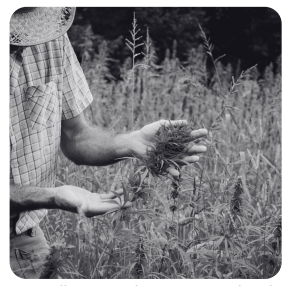
A fair and transparent trading system must be in place to keep costs down and encourage innovation. Most carbon programs operate in an opaque broker process – where the highest trust must be invested in the broker that they’re working in the farmer’s best interest and not that of the buyer.
Trading credits on a transparent marketplace generates more income for farmers as they have the opportunity to receive full market value for their credits.
Typically, as markets mature, they become more transparent and liquid, which is a trend that we believe will be followed by carbon credit markets. Buyers will appreciate true carbon price discovery for the first time, which will lead to more participation and more demand for carbon credits.
PanXchange’s transparent online trading platform will host trades of carbon credits from any program, with buyers and sellers taking advantage of real-time prices.
Typically, as markets mature, they become more transparent
and liquid, which is a trend that we believe will be followed
by carbon credit markets.
Buyers Pay Commissions
The voluntary carbon market is demand-driven, with more corporations seeking to buy offsets than there are credits to sell. For this reason, it’s the emitters/buyers who should pay a commission as opposed to the sellers. This arrangement gives farmers the absolute top-dollar maximum price for their credits.
Eliminating murky, opaque broker arrangements and creating a transparent marketplace lets farmers sell carbon credits and GHG benefits and earn 100% of their value. Flipping the commission to the buyers maximizes the leverage the seller can command on the sale price. This approach rewards the farmers on the ground who are actively combating climate change.
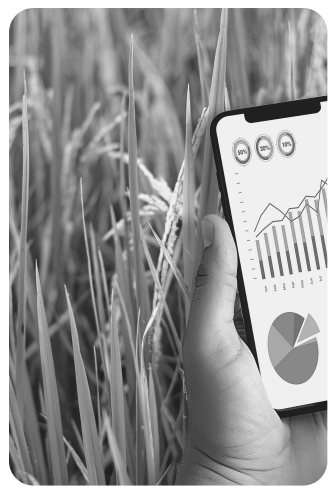
Flipping the commission
to the buyers
maximizes the
leverage the seller
can command on
the sale price.
Model-Driven Methodology
Participants in soil carbon programs start by establishing a baseline and then use data collected to estimate the amount of carbon sequestered. These measurements and related data are verified by certified third-parties in high-quality carbon credits. Carbon credit programs measure soil carbon in differing ways, and technology is evolving.
Traditional, on-site carbon soil measurements are the most expensive method, while computer-aided models are emerging to lower project costs. Two types of models include remote observation models and process-based models. Remote observation models utilize GIS and satellite imagery to detect soil organic carbon stock changes, while process-based models accurately relate agronomic practice data to changes in soil organic carbon in the soil.
Carbon programs that establish a baseline measurement of carbon in soil at the beginning of the program use onsite collection methods analyzed by dry combustion, wet oxidation and/or reflectance spectroscopy (the study of light waves reflecting off of surfaces). In the case of programs that are more model-reliant, remote tools are often pre-calibrated with real samples using these techniques.
USDA’s CarbOn Management Evaluation Tool (COMET) models greenhouse gasses based on specific climate-smart agricultural practices to estimate carbon sequestered. Another tool, from Perennial (formerly Cloud Agronomics), remotely observes features on croplands and grasslands up to 30 cm below the surface of the soil found by satellite to calculate soil organic carbon stock changes over time.
Currently the most expensive parts of a carbon program are the set up carbon monitoring/reporting costs and validation/verification costs. Minimizing onsite soil sampling (apart from sampling necessary to calibrate models) and using approved, transparent remote tools for monitoring can keep carbon monitoring and reporting costs down and simplify the validation and verification process.

All Crops Eligible
To maximize greenhouse gas removal and encourage innovation, carbon credits should be available to all farmers, even those who grow specialty crops such as alfalfa, tree nuts, hemp or bamboo.
However, even though all crops are able to sequester carbon via photosynthesis into the soils below them for long-term or permanent storage, many carbon programs are limited to certain crop varieties.
For instance, the Bayer Agriscience Carbon program is limited to farmers harvesting wheat, soy, rice, canola, and corn. The rationale behind this is that they are aggregating carbon projects to capture economies of scale. Other entities, such as Indigo Ag, Corteva and Truterra work with a larger suite of crop types – 19, 19, and 4 respectively.
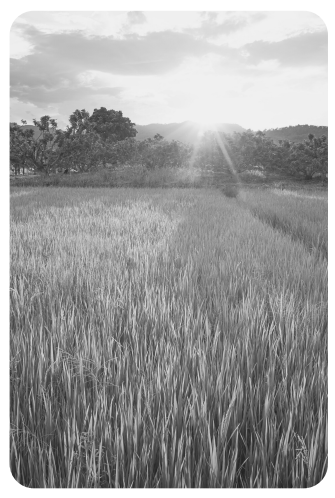
Carbon programs like Nori and Soil and Water Outcomes Fund (SWOF), limit the number of crops in their programs to those that fit the models they deploy. In the case of these two programs, their programs are limited by the Soil Metrics tool (owned by Indigo and a commercial application of USDA’s COMET, which is a process-based model). Simply put, a process-based model takes agronomic practices data, and crop type data as input, and computes projected carbon removal results as output.
Carbon credits should be
available to all farmers,
even those who grow
specialty crops such as
alfalfa, tree nuts, hemp or
bamboo.
PanXchange has the flexibility to mesh process-based models with a remote observation model using tools such as Perennial, which inputs satellite and GIS hyperspectral imaging data input into a highly predictive machine learning model. For PanXchange, the advantage of deploying a remote-observation model is that it remotely observes carbon stock changes changes in the soil, thus yielding the flexibility to work with any and all crop types.
Remote observation monitoring and measuring tools must pass industry-accepted criteria. Tools are transparent, scientifically peer-reviewed, they provide proof that they accomplish the goal of conservatively quantifying carbon removal, and have proper version control.
PanXchange views the future of carbon quantification tools as a fusion between process-based models and remote-observation models that are calibrated with empirical samples obtained at low cost. Until then, PanXchange is utilizing all tools at its disposal, to make the program affordable, crop agnostic and able to collect valuable data to cross-validate results.
Available Across USA
For-profit carbon programs are looking to capture as much market share of US croplands as possible, although there are several factors that limit certain carbon programs’ geographic footprint. Reasons for a limited geographic footprint include lack of data to support carbon quantification models, lack of pre-existing clientele, or prioritization of farmers, crop types and geographies that meet a certain scale criteria. PanXchange’s program can be adapted to any US location, and expands access to smaller-scale independent farmers.
PanXchange is utilizing all
tools at its disposal, to make
the program affordable,
crop-agnostic and able to
collect valuable data to
cross-validate results.
Choosing the Right Carbon Program
In conclusion, farmers must make careful choices when partnering with a commercial or nonprofit carbon program.
Carbon markets are changing quickly, and companies are still adapting their business models to capture this growing market. Staying within some guidelines will help farmers take the most control and maximize profits.
In general, programs that will lead to the highest profit opportunities will: drive down set-up costs, give farmers control over their own carbon credits, transact with cash, not crypto, trade on a transparent marketplace, leverage cost-saving carbon quantification technology, be crop-agnostic and be universally available across the United States.
Carbon credit markets are messy, imperfect and rapidly evolving, and we don’t know yet how much they can help fight climate change. But they are a good place to start.
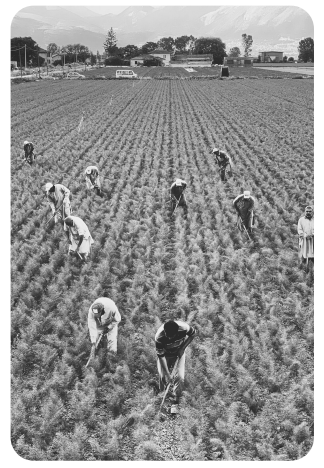
Carbon markets are
changing quickly,
and companies are
still adapting their
business models
to capture this
growing market.
Disclaimer from PanXchange
All the information and content on this website – www.panxchange.com – is published in good faith and for general information purpose only. PanXchange does not make any warranties about the completeness, reliability and accuracy of this information. Any action you take upon the information you find on this website (PanXchange.com), is strictly at your own risk.
PanXchange.com will not be liable for any losses and/or damages in connection with the use of our website.
From our website, you can visit other websites by following hyperlinks to such external sites. While we strive to provide only quality links to useful and ethical websites, we have no control over the content and nature of these sites. These links to other websites do not imply a recommendation for all the content found on these sites. Site owners and content may change without notice and may occur before we have the opportunity to remove a link which may have gone ‘bad’.
Please be also aware that when you leave our website, other sites may have different privacy policies and terms which are beyond our control. Please be sure to check the Privacy Policies of these sites as well as their “Terms of Service” before engaging in any business or uploading any information.
Consent
By using our website, you hereby consent to our disclaimer and agree to its terms. Should we update, amend or make any changes to this document, those changes will be prominently posted here. If you require any more information or have any questions about our site’s disclaimer, please feel free to contact us by email at info@panxchange.com. Our Disclaimer was generated with the help of the Disclaimer Generator.
Copyright
This is a notice that all information listed in this report is PanXchange’s intellectual property. You may not redistribute or exploit the information in any way. © 2022 PanXchange all rights reserved.

